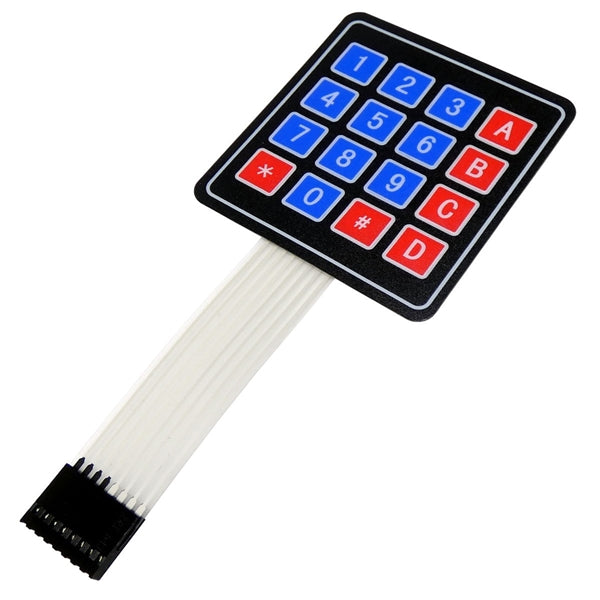Why Membrane Switches are Ideal for Durability and Performance
Why Membrane Switches are Ideal for Durability and Performance
Blog Article
Recognizing Membrane Changes: The Secret to Sturdy and Reliable Controls

What Are Membrane Layer Switches?
Membrane buttons are an advanced solution in the world of individual interface innovation, combining performance and layout perfectly. These devices work as a user interface in between individuals and digital systems, incorporating numerous elements into a compact layout. Normally built from flexible, thin layers of products, membrane layer switches are designed to react to touch, allowing customers to communicate with machinery and digital devices efficiently.
The main aspects of a membrane button include a published circuit layer, graphic overlay, and a spacer layer that avoids unexpected activation. The graphic overlay can be personalized to reflect brand name identification or user choices, boosting visual appeals while making certain functionality. Membrane buttons are generally used in numerous applications, consisting of medical devices, consumer electronic devices, and industrial tools, owing to their longevity and resistance to ecological aspects such as dampness and dust.
One of the crucial benefits of membrane buttons is their ability to endure deterioration, making them optimal for high-traffic environments. Furthermore, they are lightweight and need marginal area, enabling for cutting-edge layouts in product advancement. Generally, membrane layer switches stand for a sensible and reliable option for contemporary digital interfaces, weding technology with user-centric design concepts.
How Membrane Switches Over Job
The procedure of membrane layer switches joints on a simple yet effective device that translates individual input right into digital signals. When a customer presses the switch, the top layer flaws, permitting a conductive aspect in the circuit layer to make call with a matching conductive pad on the bottom of the visuals overlay.
The layout of membrane layer switches can differ, however they typically incorporate domes or tactile aspects to supply feedback to the user, improving the overall experience - membrane switch. The materials utilized in membrane buttons, such as polyester or polycarbonate, add to their resilience and resistance to ecological aspects, including moisture and dirt. In addition, the printed circuits are usually enveloped, which shields them from deterioration gradually.
Benefits of Membrane Layer Switches

Furthermore, membrane buttons are known for their sturdiness. Created from robust products, they are resistant to dust, dampness, and physical wear, which considerably prolongs their life-span compared to typical mechanical buttons. This durability makes them particularly ideal for high-traffic environments and applications needing durability.
An additional substantial advantage is the convenience of cleaning and maintenance. The smooth surface area of membrane switches over minimizes dirt buildup and is commonly invulnerable to spills, making them ideal for settings that call for regular sanitization.
In addition, membrane layer buttons offer a streamlined account, leading to a thinner design that can be integrated right into numerous devices without including mass. This feature not just enhances the visual charm yet likewise adds to an extra ergonomic item layout.
Applications of Membrane Switches
User-friendly and functional, membrane buttons find applications throughout a vast array of sectors, including clinical tools, customer electronic devices, and commercial devices. see this website In the clinical field, these switches are integral to gadgets such as diagnostic tools, person surveillance systems, and mixture pumps, where integrity and simplicity of cleansing are essential. Their capability to endure extreme environments and maintain functionality makes them perfect for such applications.

In consumer electronics, membrane layer switches are utilized in products like microwaves, cleaning equipments, and remotes - membrane switch. Their sleek style allows for instinctive customer interfaces, enhancing the total user experience while supplying longevity and resistance to put on and tear
Commercial tools additionally gains from membrane switches, specifically in control panels for equipment and automation systems. These switches use defense versus dust and dampness, ensuring constant performance in challenging settings. Their personalized features enable suppliers to tailor them to particular functional requirements, enhancing efficiency and functionality.
Selecting the Right Membrane Switch Over
When selecting a membrane layer button, it is important to think about various elements that affect performance and suitability for certain applications. The key factors to consider include ecological problems, tactile feedback, resilience, and design requirements.
First, examine the operating setting; buttons subjected to wetness, chemicals, or extreme temperatures need details materials to make certain durability and capability. Next, examine the requirement for tactile comments. Depending on customer communication, some applications might gain from a tactile response to verify activation, while others may choose a non-tactile layout for aesthetic reasons.
Toughness is an additional vital aspect; membrane layer buttons ought to be developed to hold up against constant use, impacts, and abrasion. Guarantee the selected button can withstand the expected lifecycle, particularly in high-usage circumstances.

Final Thought
In conclusion, membrane changes serve as essential components in the design of trustworthy and durable control systems throughout different markets. The flexibility of membrane layer switches permits for tailored options that satisfy certain functional demands, reinforcing their significance in modern-day technology.
Membrane changes stand for an important facet of contemporary user interface layout, mixing capability with durability in numerous applications.Membrane layer switches are a sophisticated service in the world of customer interface technology, incorporating performance and design flawlessly. Commonly created from versatile, thin layers of products, membrane layer buttons are made to respond to touch, making it possible for users to connect with equipment and electronic tools successfully.
The design of membrane buttons can differ, however they usually integrate domes or responsive components to offer feedback to the individual, boosting the general experience.In final thought, membrane switches over serve as crucial elements in the design of long lasting and trustworthy control systems throughout different sectors.
Report this page